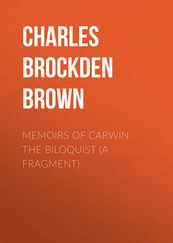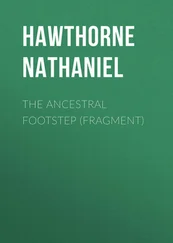Warren Fahy - Fragment
Здесь есть возможность читать онлайн «Warren Fahy - Fragment» — ознакомительный отрывок электронной книги совершенно бесплатно, а после прочтения отрывка купить полную версию. В некоторых случаях можно слушать аудио, скачать через торрент в формате fb2 и присутствует краткое содержание. Жанр: Путешествия и география, на английском языке. Описание произведения, (предисловие) а так же отзывы посетителей доступны на портале библиотеки ЛибКат.
- Название:Fragment
- Автор:
- Жанр:
- Год:неизвестен
- ISBN:нет данных
- Рейтинг книги:5 / 5. Голосов: 1
-
Избранное:Добавить в избранное
- Отзывы:
-
Ваша оценка:
- 100
- 1
- 2
- 3
- 4
- 5
Fragment: краткое содержание, описание и аннотация
Предлагаем к чтению аннотацию, описание, краткое содержание или предисловие (зависит от того, что написал сам автор книги «Fragment»). Если вы не нашли необходимую информацию о книге — напишите в комментариях, мы постараемся отыскать её.
Fragment — читать онлайн ознакомительный отрывок
Ниже представлен текст книги, разбитый по страницам. Система сохранения места последней прочитанной страницы, позволяет с удобством читать онлайн бесплатно книгу «Fragment», без необходимости каждый раз заново искать на чём Вы остановились. Поставьте закладку, и сможете в любой момент перейти на страницу, на которой закончили чтение.
Интервал:
Закладка:
Geoffrey clicked to a picture of a terrarium overcrowded with hamsters.
“But animals with access to much smaller breeding groups have a problem. The more offspring they have with each pregnancy, the more serious the threat to the gene pool they become, unless DNA protects itself by implanting a time bomb in such animals set to go off before cross-generational breeding can occur.”
The next slide showed a close-up of a pier piling stacked with mussels.
“To see if such a correlation might hold true, I began comparing animal life spans to their reproductive behavior. Mussels may live up to a hundred years. They live in colonies and simultaneously mingle billions of sex cells into the seawater to reproduce. With the tide flowing in one direction during their synchronized spawning and the sheer multitude of participants, the chance of incestuous reproduction is virtually nonexistent. No discernible life span is present. Giant clams, which reproduce much the same way, can live five hundred years. Tubeworms thriving near thermal vents at the bottom of the sea and many corals that reproduce this way are believed to live for centuries.”
Geoffrey clicked to another close-up image.
“Barnacles, on the other hand, also live in colonies but have life spans of only one or two years. Why? Barnacles reproduce in a very different way. Male barnacles extend penises nine times the length of their bodies, longer than any penis relative to body size in the animal kingdom, in order to copulate with other barnacles.”
Amusement fluttered across the audience. Geoffrey laughed.
“Size may matter, but not that much. Barnacles necessarily have a very small group of breeding partners. The risk of cross-generational breeding is high enough to require them to die before a second generation is ready to breed. Death occurs at about twice their breeding age.”
Geoffrey clicked to another image: the vast trunk of a California sequoia fringed by ferns.
“Conifers, the first trees to use pollen to reproduce, did so before the help of insects. Like coral reefs, they had to spew vast clouds of sex cells into currents of air flowing over forests, making it nearly impossible for cross-generational breeding to occur. We know of bristlecone pines nearly five thousand years old, and giant sequoias, cedars, and the New Zealand kauri pine are some of the longest-living organisms on Earth. In 2008, researchers discovered a thriving spruce tree nearly ten thousand years old.”
The next slide showed what looked like a giant scowling rat. Its naked tail was coiled around the branch it was climbing. Miniatures clung to its underside and back.
“Opossums, the only North American marsupial, are solitary, don’t migrate, and stay in the same neighborhood throughout their lives. They have up to thirteen young in a litter, which reach sexual maturity after only one year. If there was ever a case that could make cross-generational breeding possible, this is it. But since opossums don’t just play possum but actually die at only one to two years of age, no cross-generational breeding can occur.”
The next close-up image set the audience squirming in disgust.
“The humble earthworm, on the other hand, exists in vast numbers, makes no social connections, and constantly shuffles the deck of its breeding partners. Its life span is about a decade.”
The slide of a tiny furry mammal elicited cooing noises from the auditorium.
“Voles, which eat earthworms, are tiny mammals that live in communal burrows and reproduce rapidly; they live only two to six months before shuffling off their cute and fuzzy little mortal coils. Considering the frequency of their mating and the early age they reach sexual maturity, that’s just in the nick of time.”
A wave of revulsion rippled through the room as the next slide showed the caramel bead of an insect head that was seemingly being squeezed out of a large waxy bag of flesh.
“Queen termites,” Geoffrey said, “are monogamous. Together with the king termite, they generate tens of millions of offspring over the course of their lives. About the same size as the vole that lives only one hundred days, queen termites may live one hundred years.”
The next slide was an image of Bugs Bunny, which got a laugh.
“Cottontail rabbits are legendary breeders that live in small warrens, all marks against them, if this principle is correct. They live twelve to fifteen months on average, and thirty-five percent of them die in the first month. Interestingly, rabbits in captivity can live eight to twelve years. And if they are spayed or neutered, up to twice that, since their risk of cancer is greatly reduced by the procedure.”
A slide showed a whale’s fluke dripping a beaded curtain as it arced over the sea.
“Blue whales have ninety-year life spans. They travel in pods of relatively small number, like rabbits; but unlike rabbits, they congregate in vast numbers to breed. This shuffling of the deck during mating season reduces the odds of cross-generational breeding to near-zero. Bowhead whales may live more than two hundred years. We have found living individuals with stone arrowheads, which have not been used since the 1800s, still lodged in their flesh.”
Geoffrey proceeded to click through a gallery of animals.
“One of the most prolific congregators is the normally solitary whale shark. They can’t even breed until they are thirty years old, and they do so in large groups off the coasts of Mexico, Australia, the Seychelles, and East Africa as they follow their seasonal breeding tour like a social calendar of endless mixers. Whale sharks live more than a hundred and fifty years.
“Spiny lobsters also congregate, marching in great single-file conga lines across the ocean floor to breeding zones every year. They may reach ages of fifty years or more if they don’t wind up on a dinner plate first.
“Sea turtles, which live eighty years and sometimes more than a hundred and fifty years, travel thousands of miles to congregate and shuffle the genetic deck. The giant tortoises on the Galapagos and Seychelles live in vast colonies year-round and are famously long-lived.
“Squirrels, however, don’t congregate or migrate-and predictably live only one to two years, or twice the age they reach sexual maturity. In captivity they may live up to fifteen years. So, obviously, biological life span is balanced against life span in their natural habitat. No need to limit life span biologically if predators are already doing it. So long as all the knobs are set to prevent cross-generational breeding, the genetic line remains healthy.”
Geoffrey clicked from a close-up of a chubby squirrel to a portrait of a croaking frog.
“Bullfrogs live up to sixteen years in the wild, ten years on average-five times longer than squirrels. But why wouldn’t they have even longer life spans, given this equation, since they have access to large numbers of breeding partners, as do mussels, pine trees, and tortoises? After all, each female bullfrog lays up to twenty thousand eggs at a single spawning, and they live in vast numbers within proximity to one another. They make no social bonds. The chances of them mating with offspring seem similar to those of other animals that live in vast colonies.
“Bullfrogs fall victim to predators more frequently than whales or giant tortoises do, of course, and must replace themselves faster to survive as a species. But the answer, I believe, lies in the fact that bullfrog habitats don’t necessarily provide access to large breeding pools. Bullfrogs frequently get isolated in ponds as water levels recede. In the worst-case scenario, with one male and female bullfrog sharing one pond, the female may produce twenty thousand chances for cross-generational breeding if the parents live long enough. So why don’t bullfrogs have short life spans? Because their offspring swim as polliwogs for an amazing five years before becoming frogs and reaching sexual maturity. Thus, they are five when they mate, as their parents die at ten, twice the age of sexual maturity.”
Читать дальшеИнтервал:
Закладка:
Похожие книги на «Fragment»
Представляем Вашему вниманию похожие книги на «Fragment» списком для выбора. Мы отобрали схожую по названию и смыслу литературу в надежде предоставить читателям больше вариантов отыскать новые, интересные, ещё непрочитанные произведения.
Обсуждение, отзывы о книге «Fragment» и просто собственные мнения читателей. Оставьте ваши комментарии, напишите, что Вы думаете о произведении, его смысле или главных героях. Укажите что конкретно понравилось, а что нет, и почему Вы так считаете.











